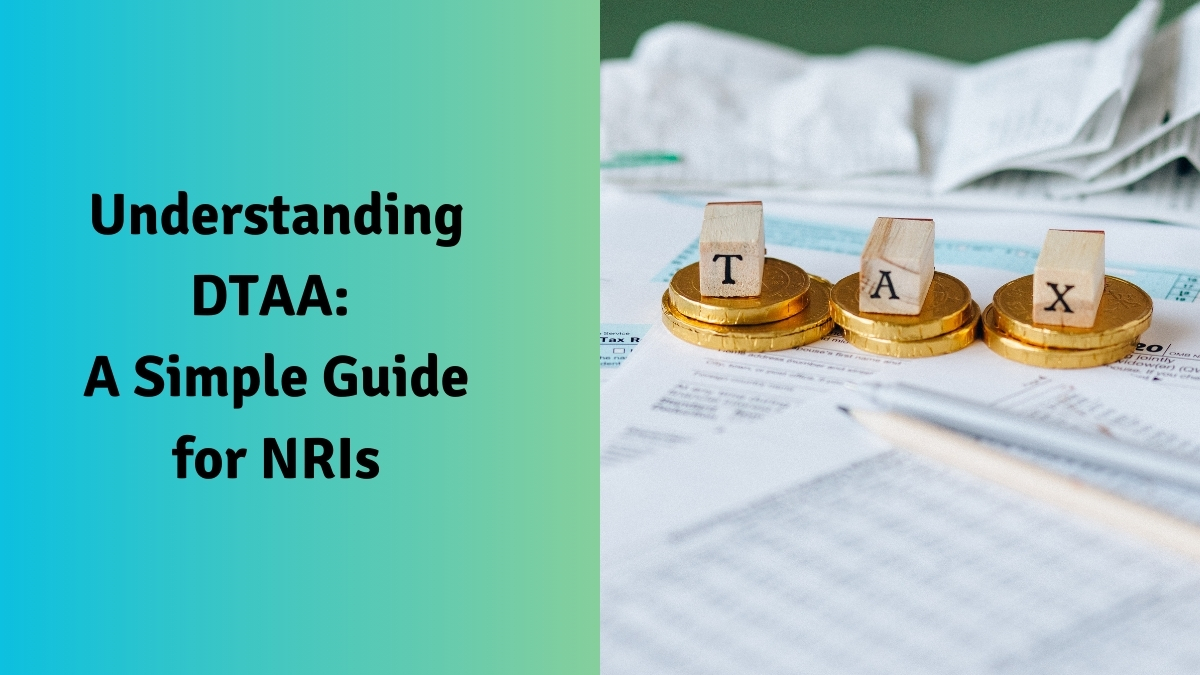Understanding DTAA: A Simple Guide for NRIs

When you live in one country but earn money in another, you might worry about paying taxes twice on the same income. That’s where DTAA(Double Taxation Avoidance Agreement) comes in – it’s a special agreement between countries that makes sure you only pay taxes once. This is especially helpful for NRIs (Non-Resident Indians) who earn money from India while living abroad.
Join our exclusive NRI-only WhatsApp Community:
https://chat.whatsapp.com/EZARhvy3JkED1TF3qjL4Jy
What’s DTAA All About?
Think of DTAA as a friendly handshake between two countries, promising that they won’t both tax the same money. It’s like having a special pass that helps you avoid paying taxes twice on your hard-earned income.
How DTAA Works: Two Main Ways
1. The One-Country Rule (Exemption Method)
Imagine you’re earning money from investments in India while living in Dubai. With this method:
- Only one country (usually where you earned the money) charges tax
- The other country agrees not to tax that money at all
For example, if you earn dividend money from Indian investments while living in the UAE:
- India collects the tax
- UAE says, “No worries, we won’t tax that money again”
2. The Fair Share Rule (Tax Credit Method)
This is like getting a discount on your taxes in one country because you already paid in another. For instance:
- You live in the USA but earn interest from Indian investments
- India takes 10% tax
- When paying US taxes, you get a 10% discount because you already paid in India
- You only pay extra if the US tax rate is higher than what you paid in India
How to Get DTAA Benefits: A Step-by-Step Guide
1. Know Your Agreement
First, understand how the DTAA works between India and your current home country. Different rules apply to different types of income.
2. Get Your Paperwork Ready
You’ll need:
- A form saying you qualify for DTAA benefits
- Your PAN card
- Visa and PIO papers (if they apply to you)
- Passport
- A special certificate called TRC showing where you live now
To get your TRC:
- Fill out Form 10FA
- Wait for Form 10FB (your certificate)
- Remember to renew it every year
3. Hand Everything In
Give your papers to:
- Your bank or whoever holds back tax in India
- Indian tax office when you file your tax return
Conclusion
DTAA is like a safety net that catches you before you pay double taxes. It helps NRIs save money and makes international work and investment easier. Just remember to talk to a tax expert who knows these rules well – they can help you get the most benefit based on your situation.
FAQs’
1. What exactly is DTAA?
Ans- It’s an agreement between countries that stops you from paying taxes twice on the same money.
2. How does it help NRIs?
Ans- It saves you money by making sure you don’t pay taxes both in India and in your new home country.
3. What are the two ways DTAA helps save tax?
Ans- One way lets only one country tax you (Exemption), and the other gives you credit for taxes you’ve already paid (Tax Credit).
4. How does the One-Country Rule work?
Ans- Simple: one country taxes your money, the other doesn’t touch it.
5. What about the Fair Share Rule?
Ans- Both countries can tax you, but your home country reduces your tax bill by whatever you paid in the other country.
6. Can I use DTAA for all my income?
Ans- Not always – different types of income (like salary or dividends) have different rules.
7. What papers do I need?
Ans- You’ll need forms showing you qualify, your PAN card, passport, and a certificate proving where you live now (TRC).
8. How do I get the residence certificate (TRC)?
Ans- Fill out Form 10FA, and you’ll get Form 10FB as your certificate after they check your details.
9. Do I need new papers every year?
Ans- Yes, you need to renew your TRC and submit fresh papers each year.
10. Should I get professional help?
Ans- Yes, it’s smart to talk to a tax expert who knows these rules – they can help you save the most money.
Disclaimer: The information provided here is for educational and informational purposes only and should not be construed as financial, legal, or tax advice. Consult with a qualified professional before making any investment decisions. We do not accept any liability for errors or omissions in this information nor any direct, indirect, or consequential losses arising from its use.



